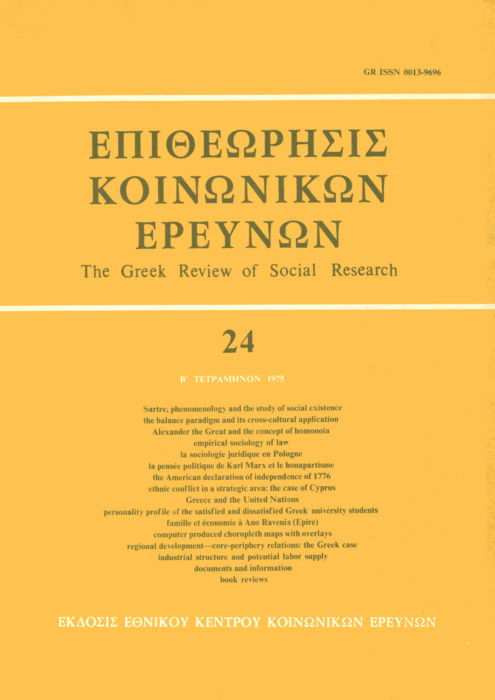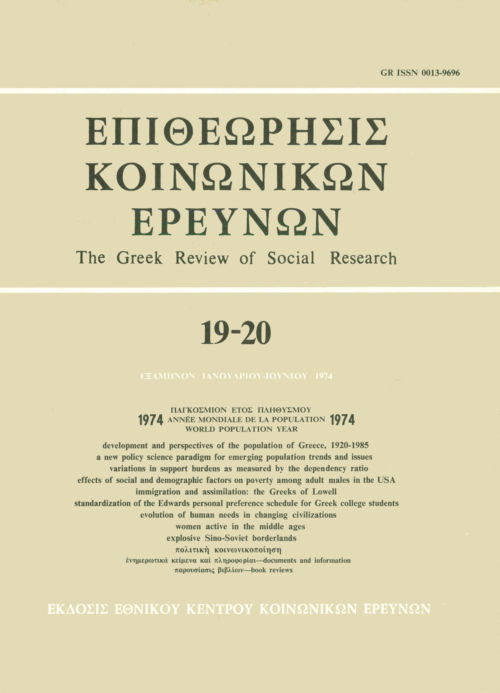Personality profile of the satisfied and dissatisfied Greek university students
Abstract
From a large sample of Greek university students
(N — 1200) those students who were highly satisfied
and those students who were highly dissatisfied
with their educational program were selected by
means of a semantic differential x attitude test. The
satisfied group consisted of 99 males and 92 females
while the dissatisfied group consisted of 36 males
and 20 females. Mean scores on a Greek translation
of the Edwards Personal Preference Schedule were
computed for these four groups of students. The results
indicate that satisfied males are significantly
higher than dissatisfied males on need for order and
significantly lower than dissatisfied males on
need for autonomy. Satisfied females are signifi
cantly higher than dissatisfied females on needs for
order and affiliation and significantly lower than
dissatisfied females on needs for dominance and autonomy.
The variable of need for achievement did not
differ between satisfied and dissatisfied groups for
either sex.
The results suggest that satisfied students, regardless
of sex, tend to be conforming, passive and (for
females) interpersonally oriented. Dissatisfied students
tend to be independent, non-conforming, and
(for females) dominating. The two groups (satisfied
vs. dissatisfied) do not, however, differ in their needs
for achievement and success. Both groups have «average
» scores on this achievement variable—a fact
which suggests that high achievement students are
only moderately satisfied with their educational
program.
The research also presents further evidence for the
validity and utility of the new Greek translation of
the EPPS. Although this study is extracted from the
same data that were used for the standardization
of the Greek EPPS, the data do support an intuitively
sensible interpretation of the personalities of
satisfied and dissatisfied university students. Further
research using the Greek EPPS should be able to
demonstrate the utility of the test as both a counseling
and research instrument.
Article Details
- How to Cite
-
Anderson, L. R. (1975). Personality profile of the satisfied and dissatisfied Greek university students. The Greek Review of Social Research, 24, 302–305. https://doi.org/10.12681/grsr.434
- Issue
- 1975: 24 Β'
- Section
- Articles

This work is licensed under a Creative Commons Attribution-NonCommercial 4.0 International License.
Authors who publish with this journal agree to the following terms:
- Authors retain copyright and grant the journal right of first publication with the work simultaneously licensed under a Creative Commons Attribution Non-Commercial License that allows others to share the work with an acknowledgement of the work's authorship and initial publication in this journal.
- Authors are able to enter into separate, additional contractual arrangements for the non-exclusive distribution of the journal's published version of the work (e.g. post it to an institutional repository or publish it in a book), with an acknowledgement of its initial publication in this journal.
- Authors are permitted and encouraged to post their work online (preferably in institutional repositories or on their website) prior to and during the submission process, as it can lead to productive exchanges, as well as earlier and greater citation of published work (See The Effect of Open Access).




